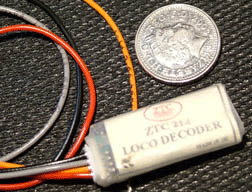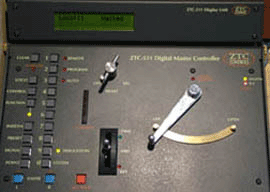


Having permanently retired, I now have more spare time than at any period in my life. I utilise this either playing Golf (which provides welcome exercise, coupled with a large degree of frustration and the opportunity to socialise). Managing the family web site, which provides the opportunity to put into practice some of the design theories I learned when a printer, whilst taxing the little grey cells and thus hoping to fight of the onset of senility. It also gets me about a little, chatting to people and digging out facts on the family. Another pastime and the subject of this article, is Railway Modelling.
As a young boy, following the end of the Second World War, there were few organised actives in which to take part, therefore we had to make our own entertainment (things don’t change, our youngsters are saying the same). Along with several of my friends, Train Spotting was a way we chose to fill some of our spare time. Out of this hobby grew an interest in steam trains which I still have to this day.
To me (and I know to others), steam trains appear to be living objects, exhibiting different moods depending on the duties they are engaged in. Sitting on Shed, just simmering away (as though asleep), they seem to be resting after an arduous days work. At the head of a train in a station waiting for passengers to board, with the Fireman shovelling coal into the Firebox and the Cylinder Cocks open, ejecting the steam and water, giving the impression of being impatient to be off on their journey. The express thundering along with smoke and steam billowing, whistle blowing, gives the impression they’re off the leash and happy to be travelling. Sadly, modern railway traction does not induce the same feelings.
Train Spotting also brought the opportunity to travel to different places in order to ‘cop’ the numbers of LMS engines which did not work in our area. So from time to time, as and when we were able to save for the fare, we would travel to such places as Rugby, Stafford, Crewe and Tamworth. Here, we could see a wider variety of the LMS engine stock, than those generally seen on our local lines. The visits to Tamworth were particularly exciting, because of a long straight, along which the largest of the LMS express engines would travel at high speed. Visits to Crewe were also greatly anticipated, since this was the home of the largest LMS loco works. This gave the opportunity see and ‘cop’ new and rebuilt engines in as new condition, as apposed to the grime encrusted engines on our local lines. At end of our school day we would hurry to a point on our local line (made accessible due to a row of bombed buildings), to cop the engine at the head of the Pines Express. I have scars that remind me of the day I slipped and ended up speared on the railings, separating the track from the bombed area.
The highlight of a day out ‘spotting’, would be a friendly driver allowing us to ‘cab’ his engine (briefly go on the Footplate). Even better was to sneak into the loco Shed and ‘cab’ a few. Around the 1950’s, following Nationalisation, British Railways built an Engine Testing House at Rugby. Here an engine would be tethered on a test bed, to be put through various tests. Some times this included running the engine at full speed, a marvellous sight and wonderful sound. Observing the testing and getting into the shed, could bring us face to face an angry Shed Forman - the chase was part of an exciting day.
British Rail’s need to modernise and reduced cost, brought about the end steam traction in the UK. Along with the demise of steam, came the closure of rail lines, most involved local branch lines and the closures became known as the Beeching Axe. Dr Beeching was the man brought in by the Government to squeeze British Railways into a cost efficient organisation. Whilst he wheeled the axe, he never quite managed to complete his brief. They are still trying to achieve the gaol today.
As steam engines were withdrawn, they were sent to scrap merchants across the UK for cutting up. Among rail enthusiasts the most memorable of these was Dia Woodhams at Barry in Wales. Around 1970, I was based in Barry Docks involved in a NATO Naval Exercise and recall row upon row of redundant steam engines in the dock sidings, I believe there were some 300 all together. For a steam engine junky it was a terrible sight. However, a large number of them were rescued by the steam preservation movement and are still steaming all around the UK. Steam engines are also regular sight on the mainline. This is despite the huge costs associated with regular repairs and compliance with modern safety legislation. The National Lottery has played a large part in this revival. Some of the engines rescued from Barry still await rebuilding to this day.
Well, enough of the misty eyed look at the past and on to the railway modelling bit. How did I get into it?
Basically it stemmed from the fact that we bought a model railway set for our son Thomas. For my part this was not a difficult decision to make, because as a boy (yes you’re right, despite being in my 60’s I am still a boy at heart), I never got to have a model railway set. Thomas’s set was a model of an Intercity 125, therefore not a steam engine and had an oval track, powered by the usual 12V Direct Current Controller. This meant that we (or should I say I), could only run one train on the track at a time – not very exciting for an intelligent boy (Tom, not me). Equally, it had to be boxed up every time we had finished play time, so on to a base board (4 feet by 8 feet) it went. This could be lifted up and rested against the wall when not in use. It was further decided, that to make play time more interesting, a second interconnected oval would be built together with a passing loop, so that more than one engine could be in use at the same time. This change also brought the need for a second engine, which naturally had to be a model of an LMS steam engine (Tom insisted, as I recall). As the upgrade of the track included point work, changing these by hand introduced a boredom factor, so they had to be automated. With the exception of the purchase of another model engine, this was the extent of our foray into model railways, due to me spending more time at work and Tom moving onto transformer toys and computer games.
The base board remained against the wall for a number of years and the engines languished in their box. However, having reached within a hairs breadth of my 60th, I decided enough full time work was enough and took early retirement (August 1997). I retired on a Friday evening and returned to work on the Monday morning, sitting in my old seat in my old office, not as an employee but an adviser for the next 4 months (prior to retiring I had set up a company to sell my telecommunications expertise). The base board was still against the wall and the engines were still in their boxes.
I continued to work part time as a Consultant for the next 3 years or so, when I made the decision to retire again. Over this period my spare time was mostly taken up by Golf. Having retired again, I had more time on my hands and it was at this point, when I returned the base board to the prone position and released the engines from their boxes. However, being a little stiff in the joints made mucking about on the floor somewhat uncomfortable, so the base board grew legs. I also started to subscribe to a railway modelling magazine, which led me to the conclusion, that I could recreate a small part of the steam railway era. Consequently, I did some research via books, magazines and the Internet on how best to proceed and what and how to model.
In the intervening years between introducing the base board and my second retirement, railway modelling had changed somewhat. It was now possible to actually control the speed of individual engines, run more than one engine on the same track, run double headed trains (two engines attached to the head of the train), etc. In other words your model railway could be run very much like the real thing, a much more interesting prospect.
The system that enables all these goodies is known as Digital Command and Control (DCC). The system is a concept from the American Railroad Modellers Association, which has laid down a standard for the system, so that DCC equipment from different manufacturers is largely compatible. Each model engine has to be equipped with an electronic device known as Decoder (these can be fitted to almost any loco, so existing stock does not have to be replaced). The decoder is given a unique address (usually the models engine number) and is controlled by signals from a controller, sent via the track. Gone are the days when you needed an individual switch to control a point or a signal, with DCC you can control all of these by commands. Like the real railway, you can set a route for a train, which includes changing the relevant points and setting the appropriate signals, with a few key strokes. Basically, it’s a computer network.